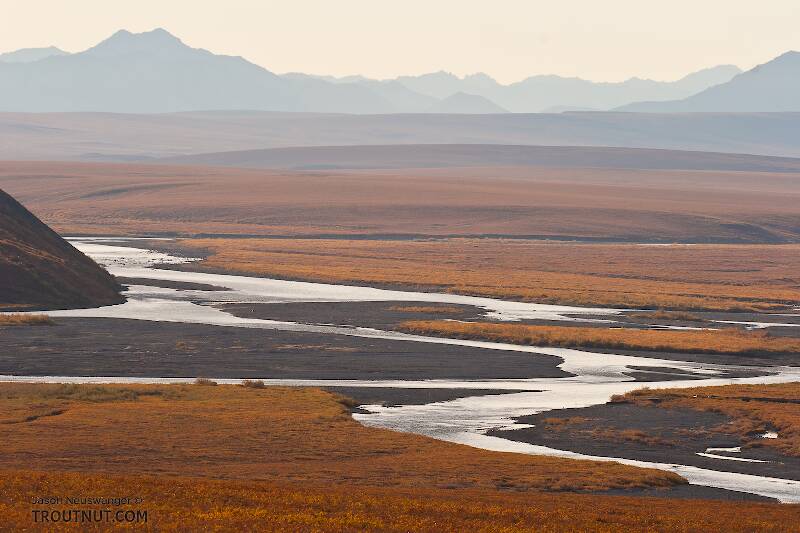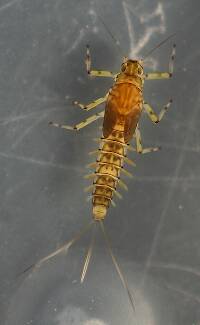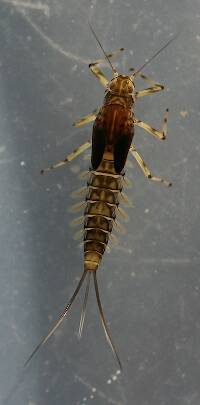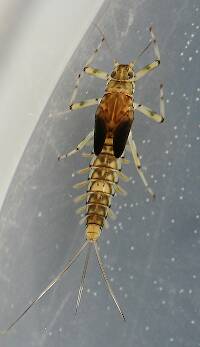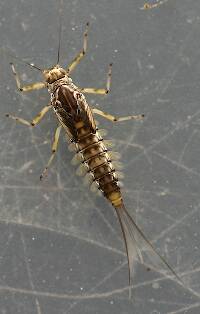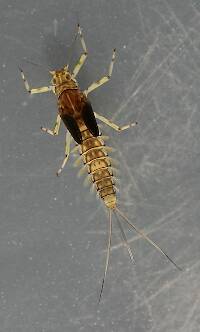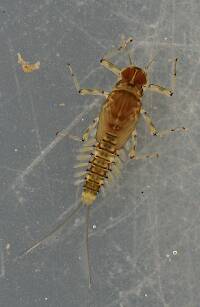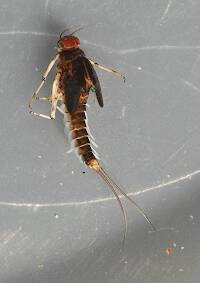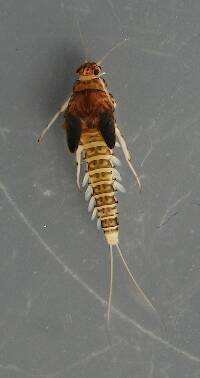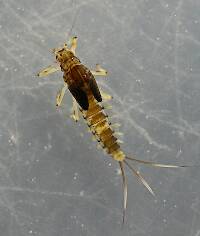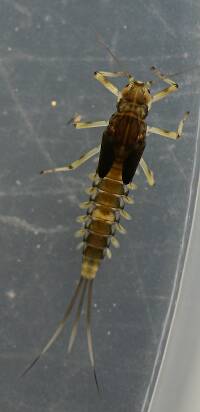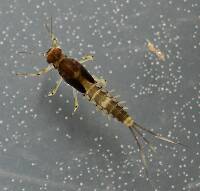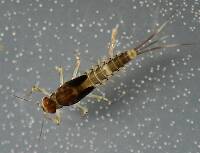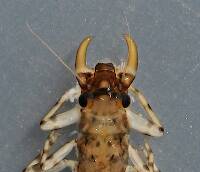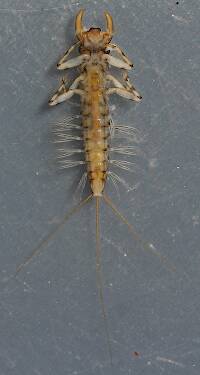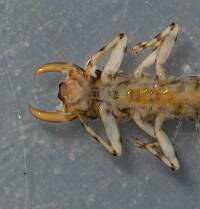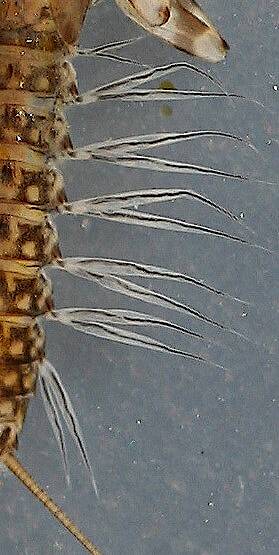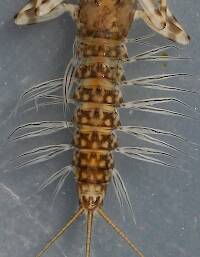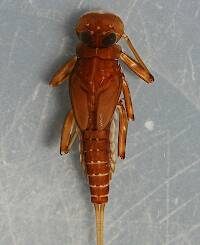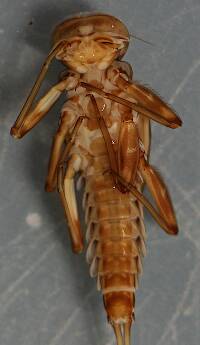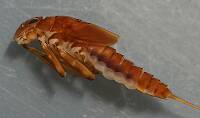
Blue-winged Olives
Baetis
Tiny Baetis mayflies are perhaps the most commonly encountered and imitated by anglers on all American trout streams due to their great abundance, widespread distribution, and trout-friendly emergence habits.
Featured on the forum

This wild-looking little thing completely puzzled me. At first I was thinking beetle or month larva, until I got a look at the pictures on the computer screen. I made a couple of incorrect guesses before entomologist Greg Courtney pointed me in the right direction with Psychodidae. He suggested a possible genus of Thornburghiella, but could not rule out some other members of the tribe Pericomini.

Troutnut is a project started in 2003 by salmonid ecologist Jason "Troutnut" Neuswanger to help anglers and
fly tyers unabashedly embrace the entomological side of the sport. Learn more about Troutnut or
support the project for an enhanced experience here.
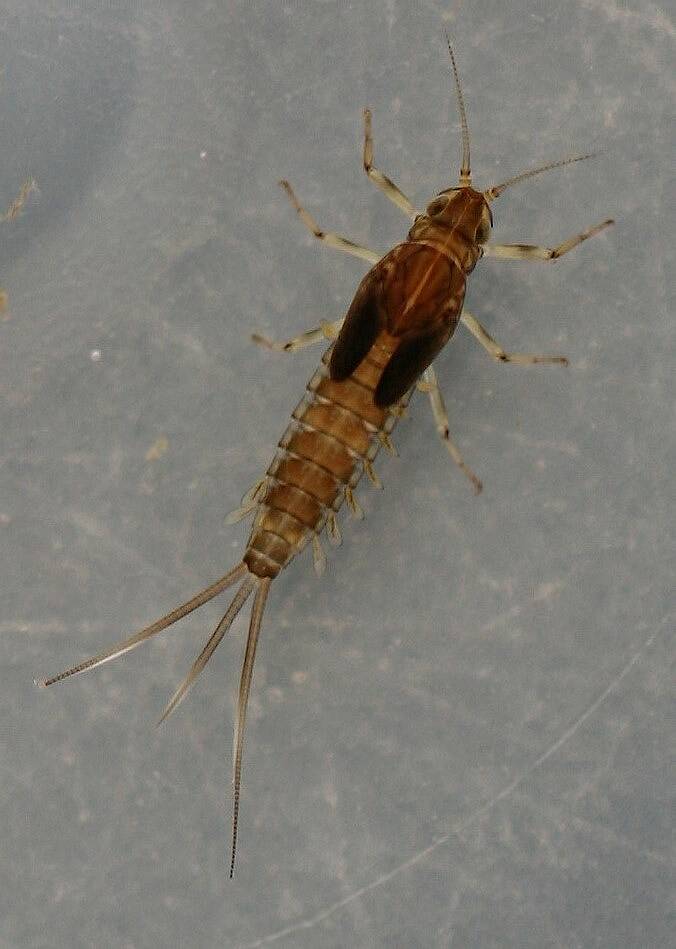
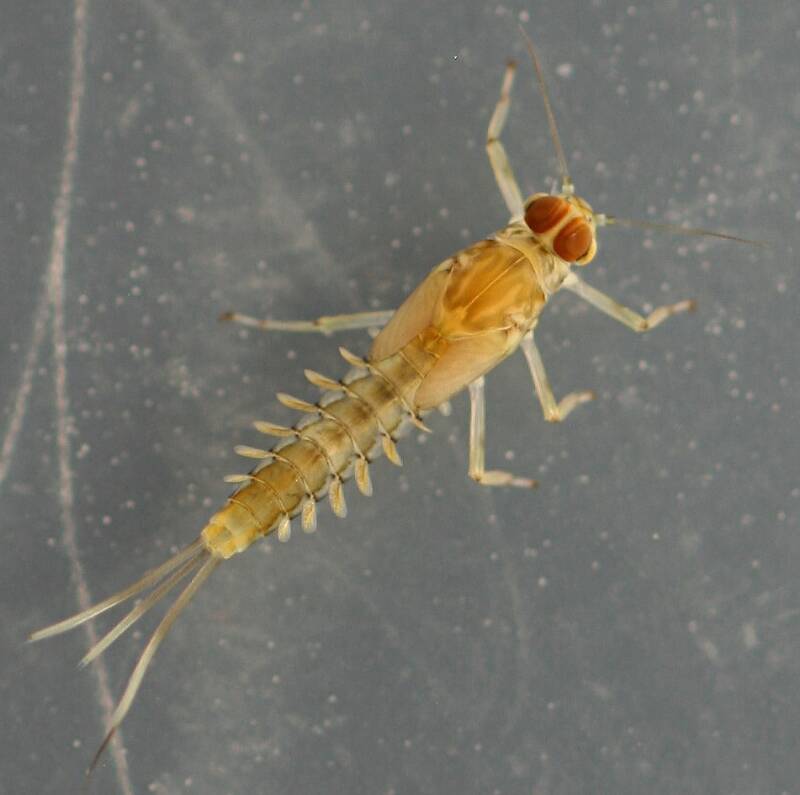
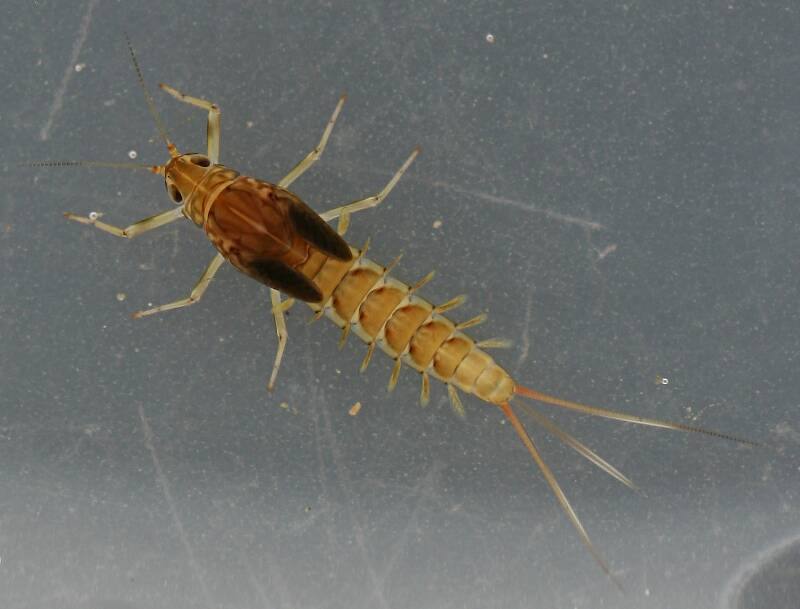
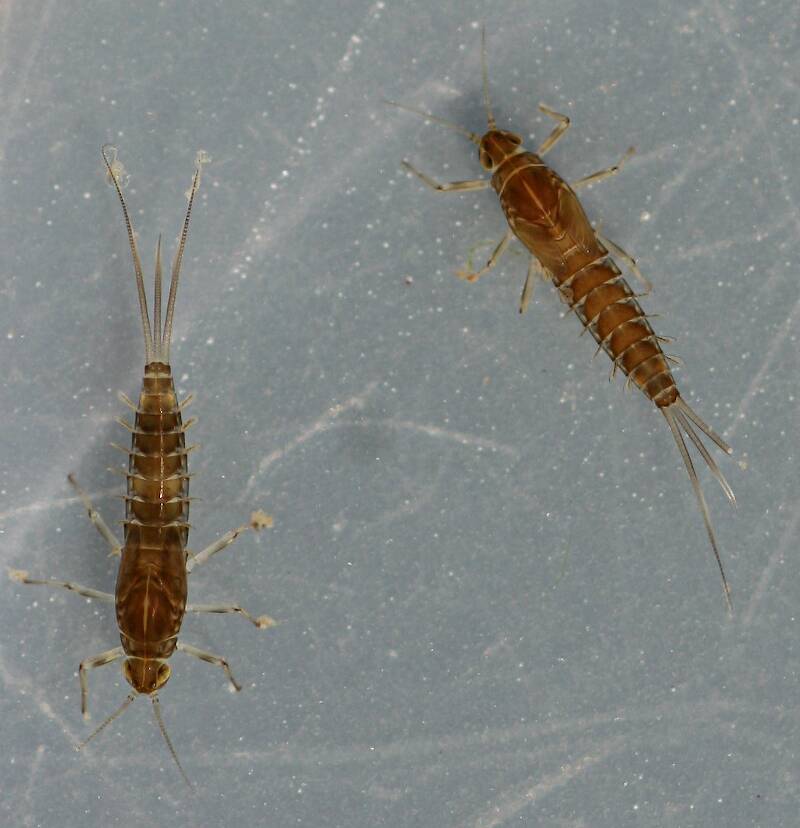

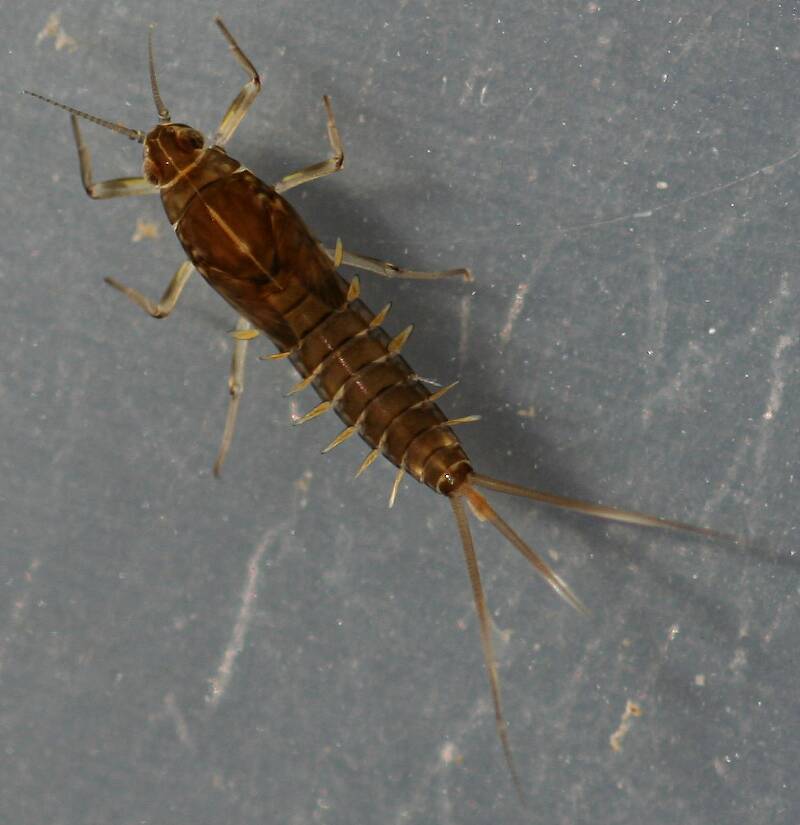
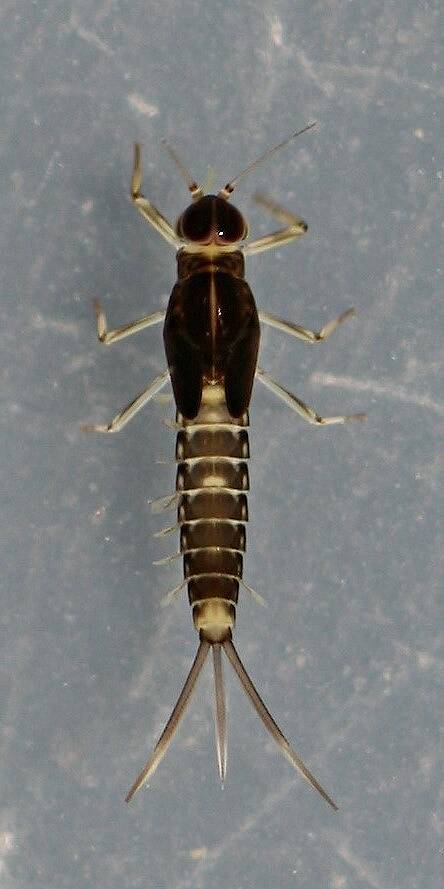
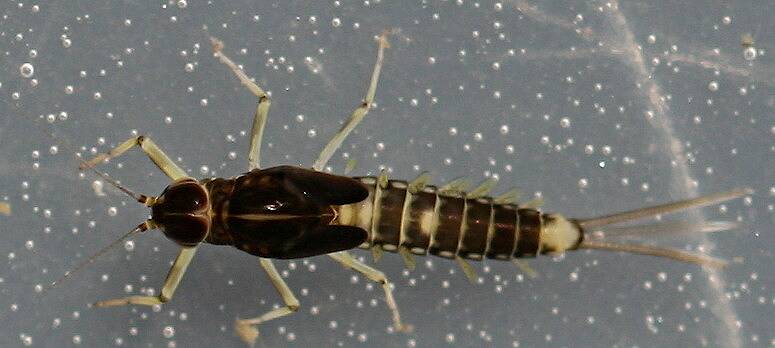
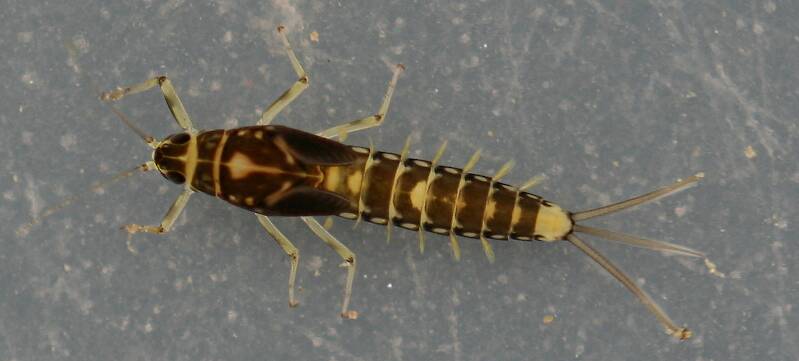
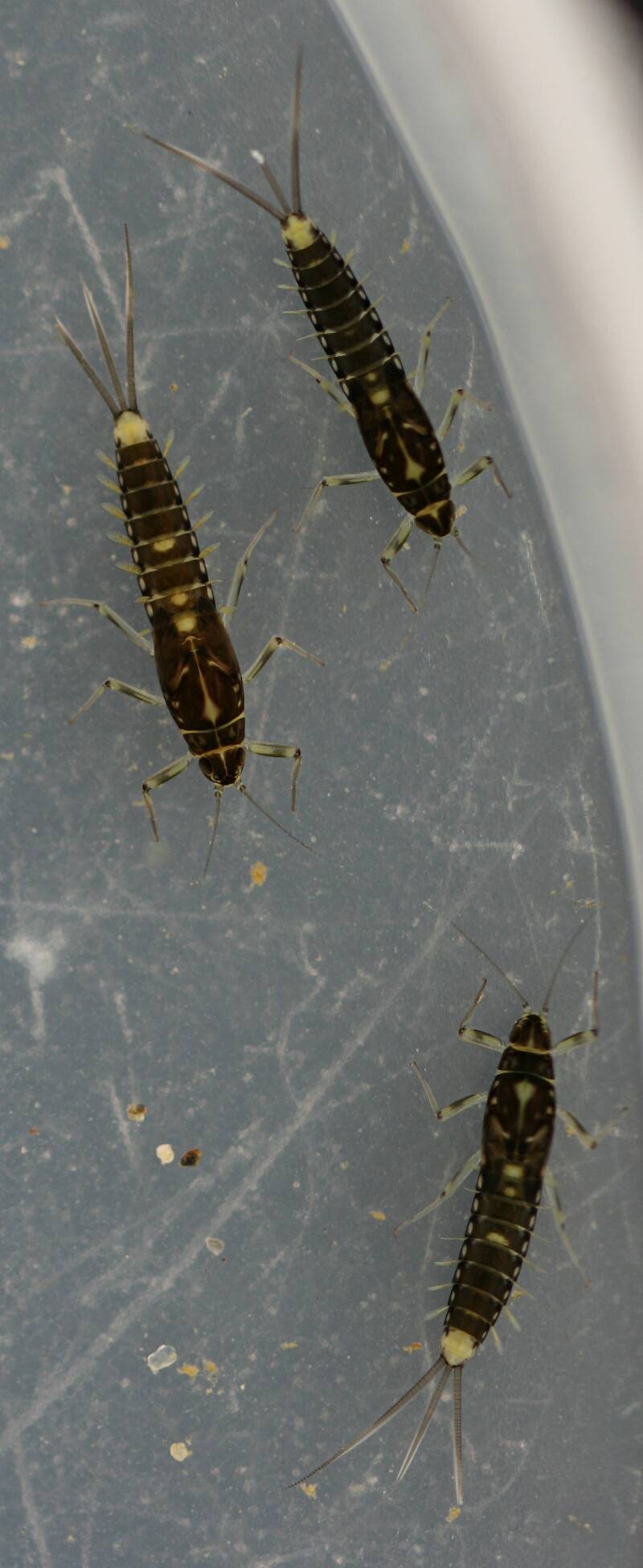
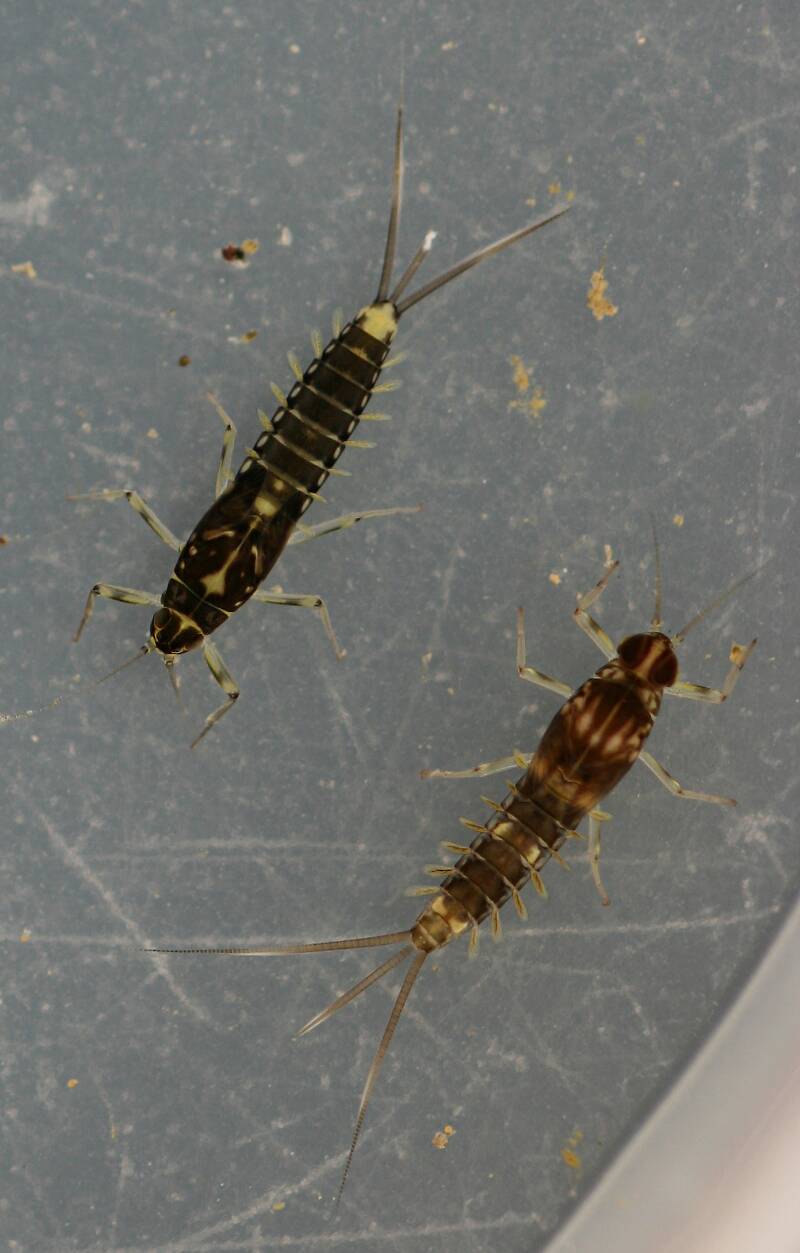
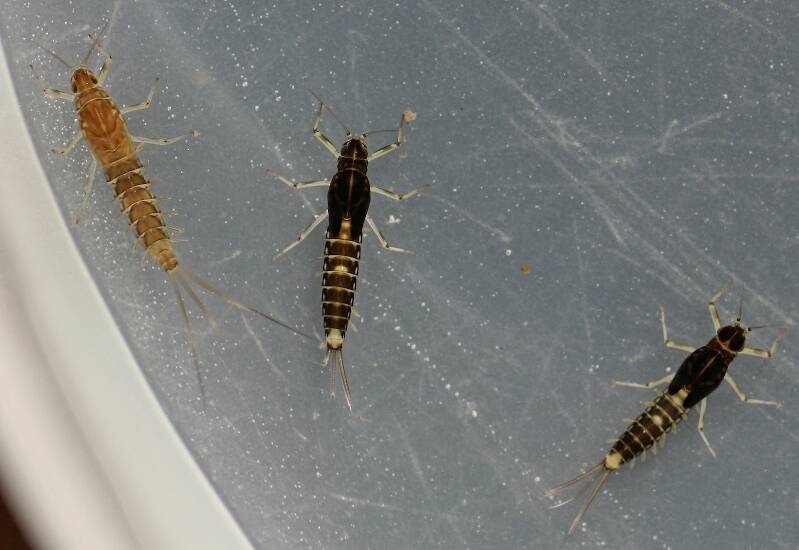
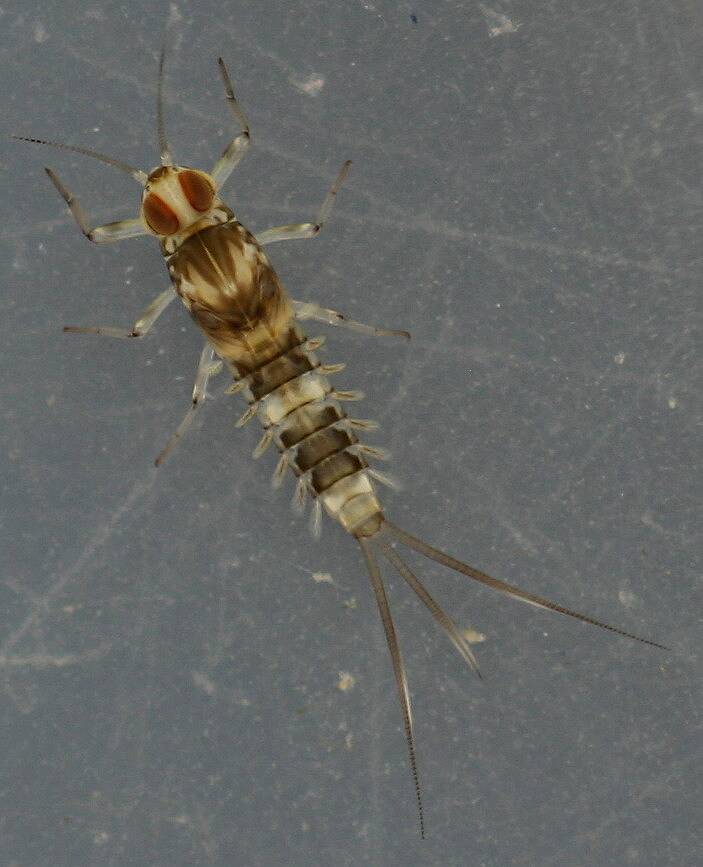
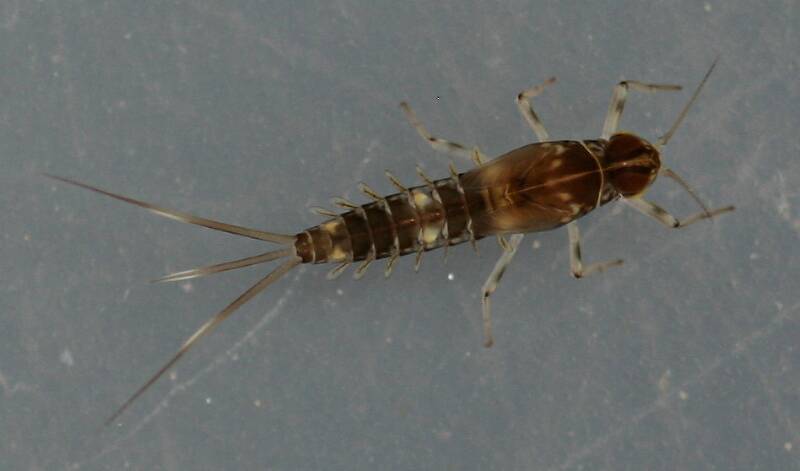
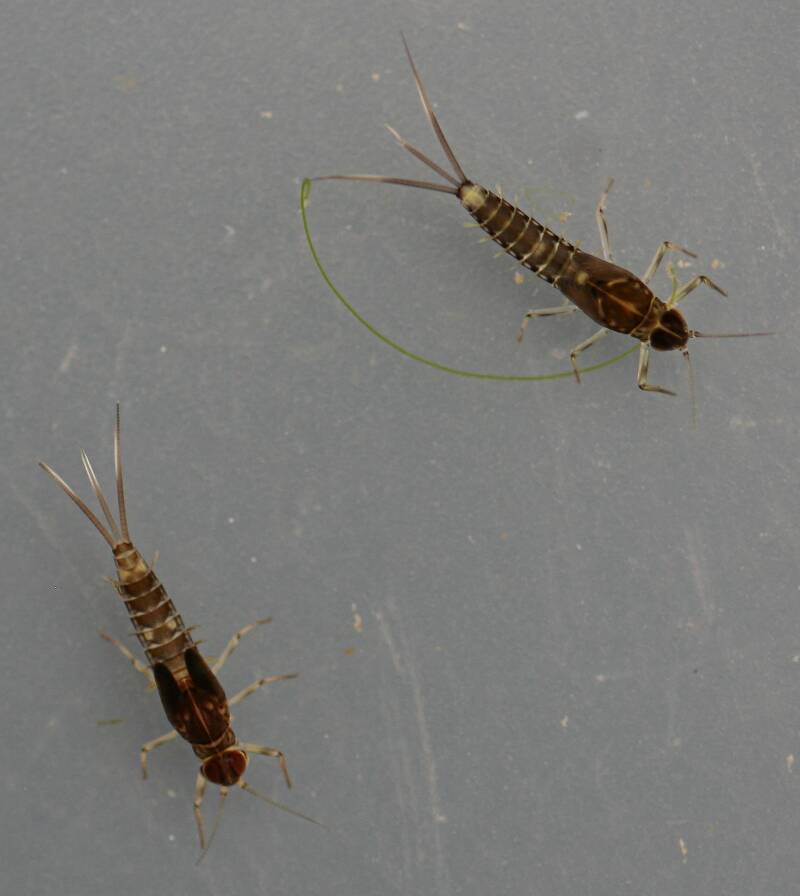
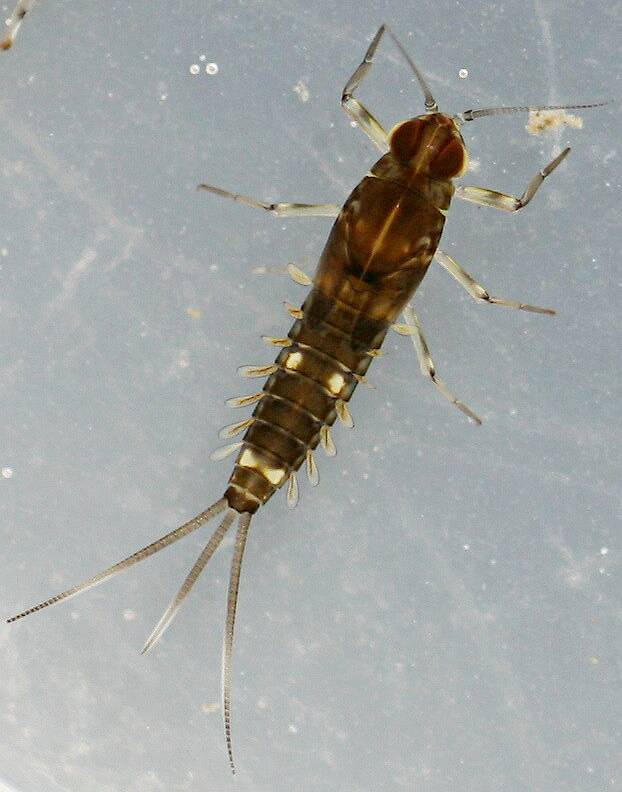
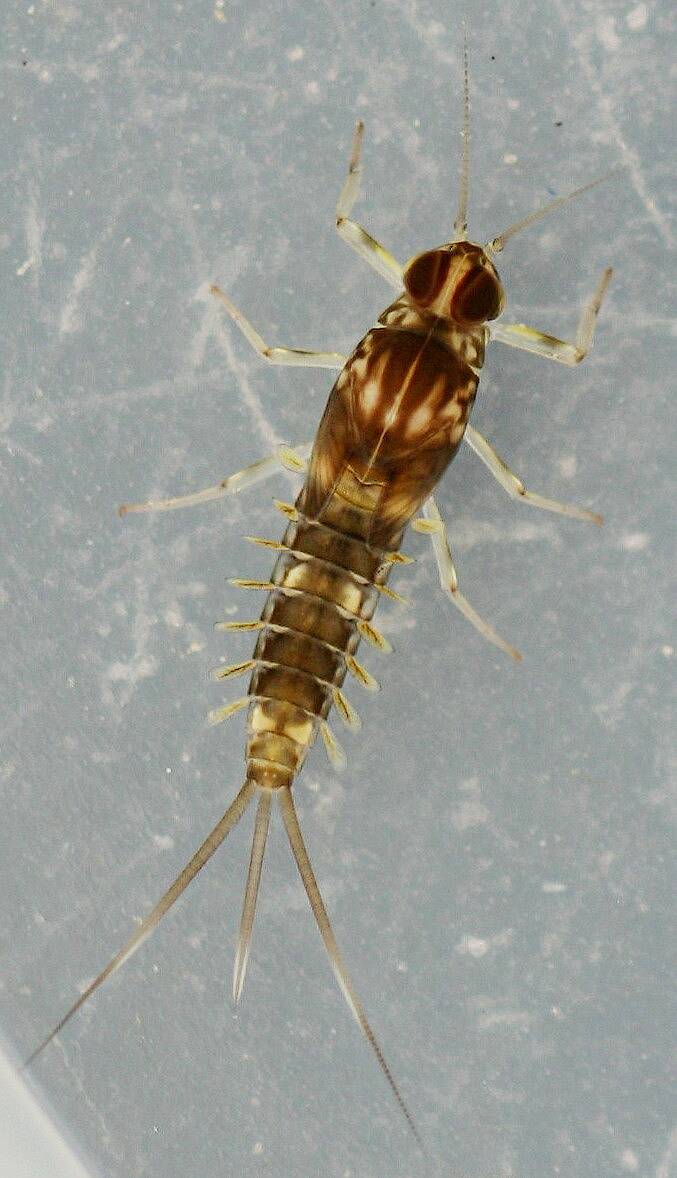

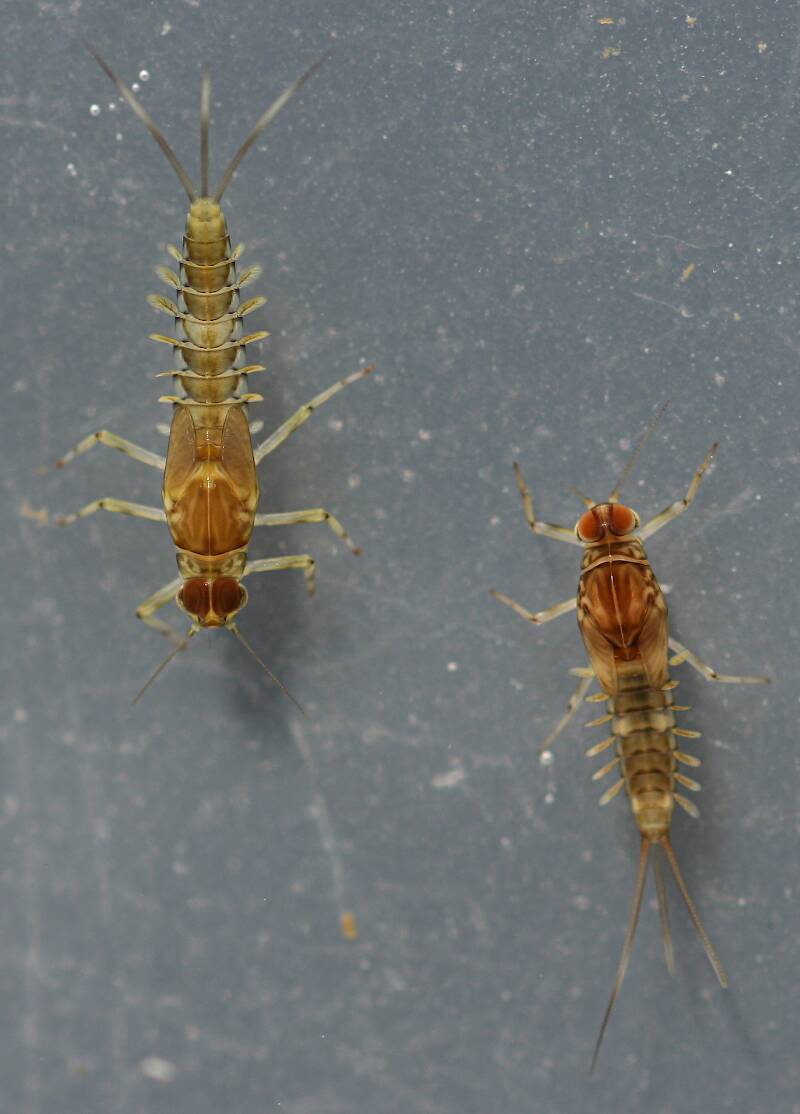
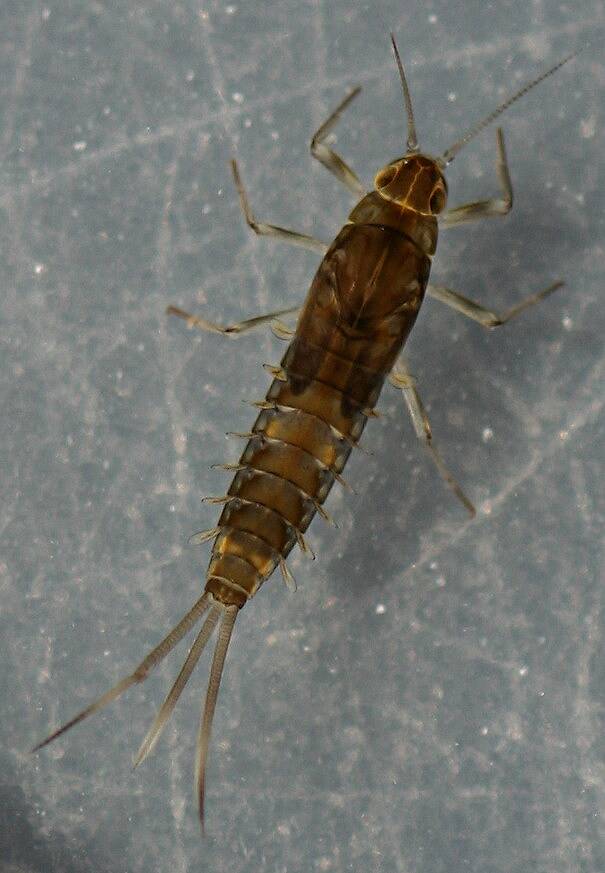
Millcreek on Nov 11, 2014November 11th, 2014, 12:59 pm EST
A while ago I did a post on what I thought were Baetis species nymphs. They turned out to be species of Fallceon. I got an email from Jeff Webb who thought one of the species might be Fallceon thermophilos based on some photos he had seen that Pat Randolph had taken. Got in touch with Pat and he sent a photo of a Fallceon thermophilos nymph and adult to me. The photo of the nymph matches the ones I had collected. Pat had collected the nymphs a few years earlier about half a mile downstream from where I got mine. Also found a partial description of the nymphs in an article by McCafferty, Meyer, Randolph and Webb "Evaluation of mayfly species originally described as Baetis Leach (Ephemeroptera: Baetidae) from California" (2008). The description of the larvae is on page 587. Link to article is http://www.ephemeroptera-galactica.com/pubs/pub_m/pubmccaffertyw2008p577.pdf
One of the other nymphs appears to be Fallceon quilleri. I found descriptions of the nymph in an article by Lugo-Ortiz, McCafferty and Waltz "Contribution to the taxonomy of the Panamerican genus Fallceon (Ephemeroptera: Baetidae)" (1994). http://www.ephemeroptera-galactica.com/pubs/pub_l/publugoc1994p460.pdf Morihara and McCafferty also give a description of the nymphs of Fallceon quilleri (as Baetis qulleri, a synonym) in "The Baetis larvae of North America (Ephemeroptera: Baetidae)" (1979). http://www.ephemeroptera-galactica.com/pubs/pub_m/pubmoriharad1979p139.pdf
As far as the third Fallceon nymph in the photos I have no idea what the species could be. Apparently there are unidentified species of Fallceon in California and this may be one of them. for now I'll just call it Fallceon sp.1.
I don't know how I misidentified the nymphs to Baetis in the first place (probably just butt stupid) but hopefully this ID is correct. I've removed the photos from the original post and placed them here along with some extra photos.
One of the other nymphs appears to be Fallceon quilleri. I found descriptions of the nymph in an article by Lugo-Ortiz, McCafferty and Waltz "Contribution to the taxonomy of the Panamerican genus Fallceon (Ephemeroptera: Baetidae)" (1994). http://www.ephemeroptera-galactica.com/pubs/pub_l/publugoc1994p460.pdf Morihara and McCafferty also give a description of the nymphs of Fallceon quilleri (as Baetis qulleri, a synonym) in "The Baetis larvae of North America (Ephemeroptera: Baetidae)" (1979). http://www.ephemeroptera-galactica.com/pubs/pub_m/pubmoriharad1979p139.pdf
As far as the third Fallceon nymph in the photos I have no idea what the species could be. Apparently there are unidentified species of Fallceon in California and this may be one of them. for now I'll just call it Fallceon sp.1.
I don't know how I misidentified the nymphs to Baetis in the first place (probably just butt stupid) but hopefully this ID is correct. I've removed the photos from the original post and placed them here along with some extra photos.
"If we knew what it was we were doing, it would not be called research, would it?"
-Albert Einstein
-Albert Einstein
Konchu on Nov 14, 2014November 14th, 2014, 12:52 pm EST
Really great photos. Thanks for sharing them.
Millcreek on Nov 14, 2014November 14th, 2014, 4:32 pm EST
Luke -
Thanks, you're welcome. As an aside, what is the mayfly nymph in the photo you have to the side of your posts?
Really great photos. Thanks for sharing them.
Thanks, you're welcome. As an aside, what is the mayfly nymph in the photo you have to the side of your posts?
"If we knew what it was we were doing, it would not be called research, would it?"
-Albert Einstein
-Albert Einstein
Konchu on Nov 21, 2014November 21st, 2014, 1:54 pm EST
It is a Teloganodes (Teloganodidae) species from Sri Lanka.
Millcreek on Nov 21, 2014November 21st, 2014, 2:35 pm EST
Not Teloganodes jacobusi by any chance?:)
"If we knew what it was we were doing, it would not be called research, would it?"
-Albert Einstein
-Albert Einstein
Quick Reply
Related Discussions
Topic
Replies
Last Reply
0
Nov 6, 2020
by Troutnut
by Troutnut

